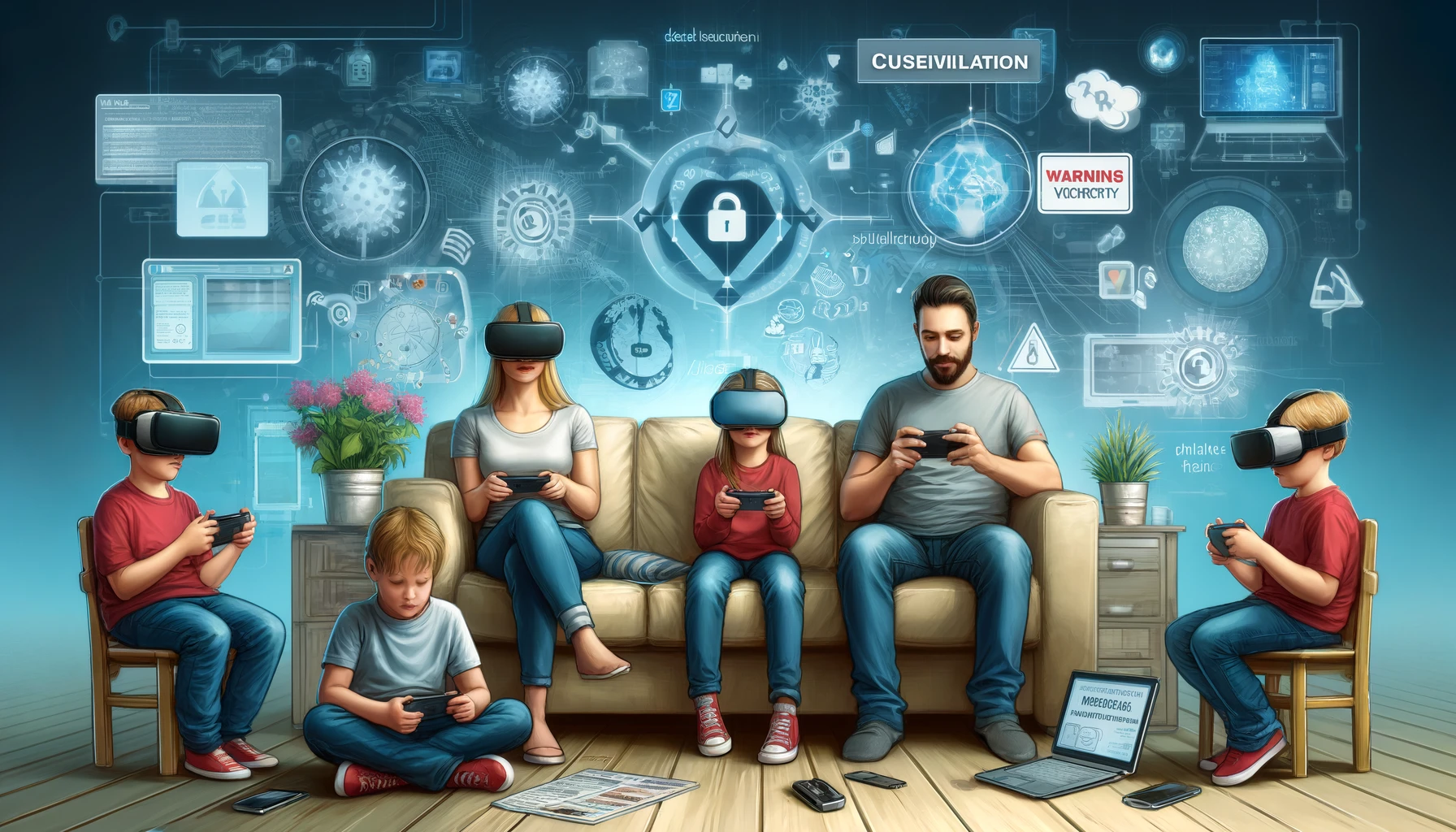Is virtual reality safe for kids? New study reveals shocking parental blind spots

Virtual reality (VR) has exploded in popularity in recent years, attracting users of all ages, including children. However, beneath the dazzling visuals lies a potential minefield of unseen threats including data surveillance, inappropriate social interactions, and even exposure to predatory behaviour. This is especially concerning for underage children, who are more vulnerable online.
A new study reveals that parents aren't as aware of the unique security and privacy risks lurking beneath the dazzling VR visuals.
Let's delve deeper!
Hidden threats
VR opens a fascinating array of experiences and possibilities. This immersive technology allows you to experience environments and scenarios that would otherwise be inaccessible. However, it also presents significant challenges, particularly concerning security and privacy. VR collects extensive personal data, which can be exploited if not properly safeguarded.
VR systems collect:
- Motion-tracking data: Essential for full-body experiences, this data reveals users' movements, potentially inferring physical characteristics.
Anupam Das, the co-author of the paper and an assistant professor of computer science at NC State University, explains, "VR technologies capture a tremendous amount of data on user movement, which can be used to infer information ranging from a user’s height to medical conditions."
- Camera data: Cameras capture the user's surroundings to detect obstacles, but can also be exploited for unwanted surveillance.
- Voice data: Social VR experiences often utilize voice chat, capturing conversations and potentially revealing sensitive information.
As highlighted in the paper, children, in particular, face more tailored risks, such as predators, harassment, cyberbullying, and inappropriate adult content, among others. Previous studies have collectively pointed out that both bystanders and parents are concerned about children's privacy when interacting with strangers in VR environments. One study even suggests that VR privacy guidelines should be simplified to match children's reading and literacy levels, making it easier for them to understand and follow privacy practices.
These data points, combined with the unique vulnerabilities children face online, paint a concerning picture.
Perception vs Reality
The study conducted in-depth interviews with 20 parents of children under 18 who use VR apps. The findings revealed a significant gap between perceived risks and reality. Below are the findings:
- When asked about VR concerns, parents focused primarily on general online safety issues and physical well-being, not the specific security and privacy risks unique to VR environments. This suggests a significant blind spot in parental awareness.
- Many parents viewed VR as a cutting-edge technology, and therefore inherently harmless for their children. This misconception downplays the potential dangers lurking beneath the dazzling VR surface.
- Overgeneralized Rules: Parents tended to apply the same digital safety rules they use for traditional online platforms to VR. However, the immersive and interactive nature of VR necessitates a more nuanced approach to safeguard children. The researchers believe this phenomenon may be attributed to parents’ lack of experience in using VR and their knowledge gap in the nuances between VR and other technologies.
- A significant portion of parents hadn't considered the vast amount of data VR systems collect, including movement tracking, camera capture, and even voice data. This lack of understanding hinders their ability to manage their children's VR privacy.
- Some parents downplayed the security and privacy risks due to the relatively small user base of VR compared to established social media platforms. However, this overlooks the potential for targeted attacks or exploitation within VR environments.
"To be clear, most parents were aware of the possibility of data surveillance, but the vast majority were not concerned about it," says Abhinaya S B, co-author of a paper on the work and a Ph.D. student at NC State.
Recommendations
The research underscores the urgent need for a multi-pronged approach to address the security and privacy concerns surrounding VR for children. Here are some key recommendations:
Parents and Educators
- Equipping parents and educators with a deeper understanding of the unique risks associated with VR compared to other digital platforms is essential.
- Children may understand physical safety risks better than online ones. Educators and parents can leverage physical metaphors to explain VR risks and empower children to stay safe.
VR companies
- VR companies need to redesign their security and privacy controls to be more child-friendly. These controls should be easy for parents to understand and implement, offering clear and granular control over VR experiences.
- Privacy and security should be an integral part of the onboarding process in VR platforms. Clear and age-appropriate guidance should be provided to educate users about potential risks and available safeguards.
Government and policymakers
- Governments should establish frameworks to audit VR companies' security and privacy practices to ensure user protection, particularly focusing on safeguarding children in VR environments.
The study emphasizes the importance of collaboration among all stakeholders to create a safe and secure VR environment for children. By working together, parents, educators, VR developers, and governments can transform the Wild West of VR into a secure and enriching playground for children.
"It is essential for parents to experience and understand VR before they let their children use it, to get a sense of the security and privacy risks VR may pose,” Das says. However, while parents serve as the first line of defense for protecting children against these risks in VR, it is imperative for other stakeholders such as educators, developers, and policymakers to take proactive steps to ensure the comprehensive protection of children in VR environments.”
The paper, "Understanding Parents’ Perceptions and Practices Toward Children’s Security and Privacy in Virtual Reality," was presented at the IEEE Symposium on Security and Privacy in San Fransico. Authors of this paper include Jiaxun Cao and Pardis Emami-Naeini of Duke University and Abhinaya S B and Anupam Das of North Carolina State University.










